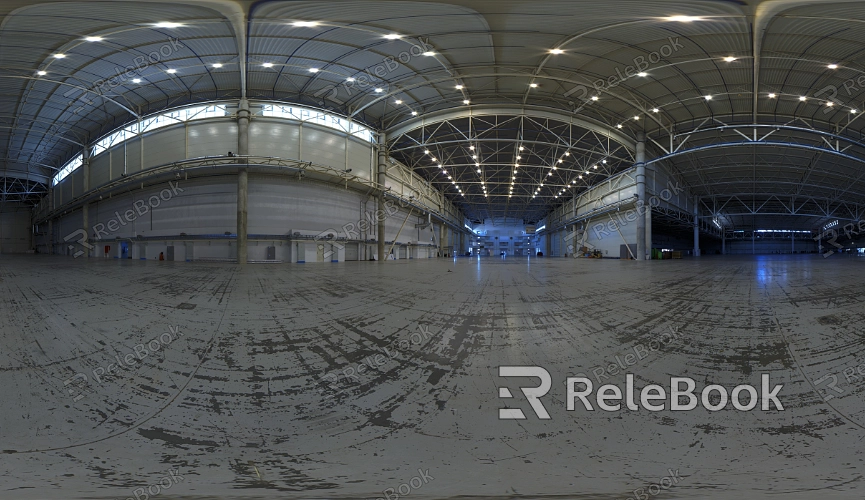What is SDR vs HDR
In fields like architectural visualization, game development, and film production, designers often face the decision between using SDR or HDR. This choice directly impacts the final image quality and visual experience. In this article, we’ll explore the key differences between SDR and HDR, explain their application in various 3D software, and share some tips on how to select and utilize them effectively in your projects.

1. Differences in Brightness and Contrast
SDR Brightness and Contrast:
SDR (Standard Dynamic Range) relies on traditional display technology, with a limited brightness range typically between 100 to 300 nits. This limitation means SDR images may lose some details in both highlights and shadows. Additionally, SDR’s contrast range is relatively narrow, often falling short when it comes to representing scenes with extreme brightness or darkness.
HDR Brightness and Contrast:
HDR (High Dynamic Range) significantly expands both the brightness and contrast range. HDR displays can reach brightness levels of 1000 nits or more, capable of rendering deeper blacks and brighter whites. This broad dynamic range allows HDR to retain more details in high-contrast scenes, making images appear more vivid and lifelike.
Application in 3D Software:
3D software like Blender, 3ds Max, and Cinema 4D support HDR rendering. Designers can leverage HDR to create more realistic lighting effects, especially in complex lighting scenarios. For instance, in an outdoor scene with direct sunlight, HDR can accurately capture details in both the bright areas and the shadows, whereas SDR might struggle to achieve the same level of detail.
2. Differences in Color Range and Representation
SDR Color Range:
SDR has a more limited color range, usually following the sRGB color standard. This means that SDR may appear somewhat dull when displaying highly saturated colors.
HDR Color Range:
HDR supports a broader color gamut, such as Rec. 2020 or DCI-P3 standards, which can display a wider range of colors, especially at extreme brightness levels. This gives HDR a clear advantage in rendering vibrant and complex colors compared to SDR.
Application in 3D Software:
In 3D rendering, HDR’s wide color gamut can more accurately simulate real-world color variations. For example, when rendering a model with complex materials, HDR can precisely capture subtle changes in metallic reflections or fabric colors under different lighting conditions. SDR, on the other hand, may struggle with color accuracy, leading to issues like color distortion or loss of detail.

3. Differences in Dynamic Range
SDR Dynamic Range:
SDR has a narrow dynamic range, which can limit its ability to simultaneously display details in both very bright and very dark areas of a scene. For example, in a nighttime scene, SDR might cause the bright stars in the sky to lose detail while making the ground appear too dark.
HDR Dynamic Range:
HDR greatly expands the dynamic range, allowing it to capture details in both bright and dark areas within the same image. This makes HDR particularly effective for complex lighting scenarios, where it can present a richer and more layered image.
Application in 3D Software:
In 3D modeling and rendering, HDR excels at handling scenes with high dynamic range. For instance, in an indoor scene with strong light sources, HDR can simultaneously render the bright sunlight streaming through a window and the subtle details in the shadows inside the room, while SDR might not be able to achieve this, leading to image distortion.
4. Differences in File Size and Performance
SDR File Size:
Because SDR images have a smaller dynamic and color range, their file sizes are generally smaller, making them easier to store and transfer. Additionally, SDR has lower hardware requirements, making it more stable in performance and suitable for lower-spec systems.
HDR File Size:
HDR images typically contain more brightness and color information, resulting in significantly larger file sizes compared to SDR. Rendering HDR content also demands more from hardware, particularly when dealing with complex scenes, requiring more powerful processors and graphics cards.
Application in 3D Software:
When using HDR in 3D software, designers must balance image quality with system performance. For example, in a high-resolution architectural rendering project, using HDR can enhance image quality, but it may also increase rendering time and file management complexity. Therefore, choosing between HDR and SDR should be based on project needs and system capabilities.
SDR and HDR each have their strengths and weaknesses. In 3D modeling and rendering, the choice between these technologies depends on the specific demands of the project. SDR is well-suited for simpler projects or those with higher performance requirements, while HDR shines in scenarios that demand high quality and realism. By understanding the differences between the two, designers can make more informed decisions to optimize their workflow and achieve the desired final result.
If you’re looking for high-quality HDR image resources, 3D textures, SketchUp models, or 3ds Max models to elevate your 3D modeling and rendering projects, Relebook offers a wealth of options to help you achieve outstanding visual effects.

